| Vintage Pulp | May 23 2021 |

Social critique lurks in the dark corners of Evelyn Keyes film noir.
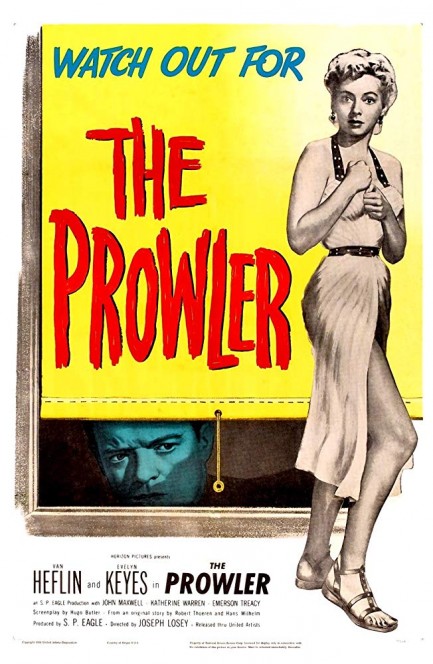
This unusual poster was made for the film noir The Prowler, which premiered in the U.S. today in 1951 starring Evelyn Keyes and cinephile fave Van Heflin. When a woman reports a prowler one of the cops that responds to the call becomes infatuated with her and decides to make her his own, despite the fact that she's married. The process of claiming her involves him forcing himself upon her, but this being a mid-century drama, after the fade to black we fast forward a few weeks and the two are now having an affair.
This is the set-up of the film, not its story arc, so we haven't given anything anyway in terms of major plot points, however we wanted to mention the preamble because it's uncomfortable viewing—though we should note that the film doesn't present this behavior as normal. It also seems clear that Heflin is able to pull this off specifically because a fizzled Hollywood career has made Keyes' character vulnerable, and she's unhappy in a marriage that she agreed to for reasons of security. So if you watch the film don't get your hackles up. In order to condemn behavior it's useful to show it, and that's what Heflin's manipulations are all about.
But there's more going on here than just a noir drama about a bad man and a targeted woman. The movie was written largely, if not wholly, by blacklisted writer Dalton Trumbo, and he always has a deeper message. Here's a notable line of dialogue concerning bad police officers: “It depends on what you think a cop's job really is. I figure that the job of a cop is to protect lives. Now some of these trigger happy guys, they think they have to protect things.”
Hmm. Relevant to today? Quite possibly.
Often you can identify a film noir by the simple fact that the lead male is screwed, and gets progressively more screwed as the movie unfolds. The Prowler reverses the formula and places Keyes in the screwed role and makes Heflin a sort of homme fatale, a sociopathic manipulator determined to get what he wants no matter the cost. What he wants is Keyes, and he'll destroy her marriage, her self respect, her mental stability, and any other pillar of her existence to have her. And of course, in so doing, he'll risk losing what humanity he has and descending into soulless desolation.
Evelyn Keyes was a talented performer. We've seen her several times now and she always kills it. Thanks to her and others The Prowler is a well acted movie. It's also beautifully shot. It was directed by Joseph Losey—soon to be blacklisted along with Trumbo, so presumably they were on the same page concerning social critique as cinematic subtext. Millions of average Joes made the same gripes as Trumbo and Losey, and millions of average Joes still do today. But when filmmakers weave a narrative tapestry that calls America broadly corrupt, trouble with the empty suits in Washington D.C. always looms.
Here's a parting shot from Trumbo: “So I'm no good. But I'm no worse than anyone else. You work in a store you knock down on the cash register. The big boss, [he cheats on] the income tax. [Politician] sells votes. The lawyer takes bribes. I was a cop. I used a gun.”
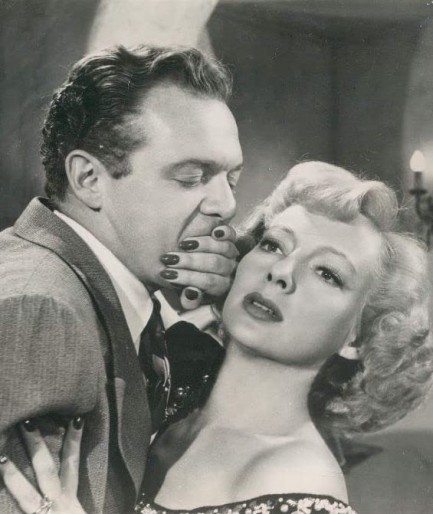 Don't criticize America like that! People will think you're a communist.
Don't criticize America like that! People will think you're a communist.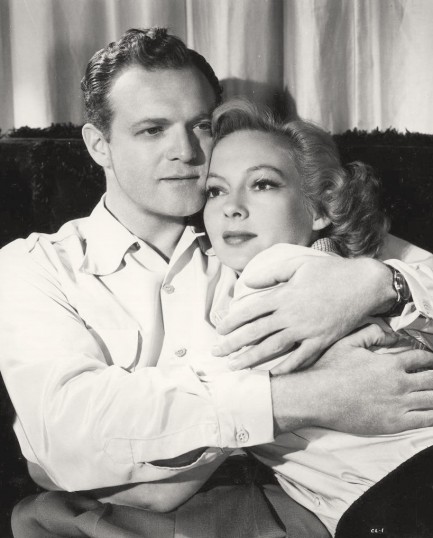 I have been re-educated by the House Un-American Activities Committee. I am happy. America is perfect.
I have been re-educated by the House Un-American Activities Committee. I am happy. America is perfect. | Intl. Notebook | May 23 2021 |

Nobel Prize winning author John Steinbeck wrote an unpublished werewolf novel.
 In what qualifies around here as blockbuster news, it turns out literary master John Steinbeck wrote a werewolf novel. Rejected by publishers in 1930, it's currently under lock and key at the Harry Ransom Center at the University of Texas in Austin. The Steinbeck estate has so far declined to authorize its release. Titled Murder at Full Moon, it's reportedly a 233-page typescript, and as a bonus contains a couple of illustrations drawn by Steinbeck.
In what qualifies around here as blockbuster news, it turns out literary master John Steinbeck wrote a werewolf novel. Rejected by publishers in 1930, it's currently under lock and key at the Harry Ransom Center at the University of Texas in Austin. The Steinbeck estate has so far declined to authorize its release. Titled Murder at Full Moon, it's reportedly a 233-page typescript, and as a bonus contains a couple of illustrations drawn by Steinbeck.We'd love to read it. We'd enjoy comparing it to Guy Endore's werewolf novel The Werewolf of Paris, which was published in 1933. But if we had to guess, we'd say the public will have wait a long while for Steinbeck's moon tale to rise. What is there to gain when his reputation is pure platinum and his books—particularly The Grapes of Wrath and Of Mice and Men, which are required reading for students the length and breadth of the U.S.—still sell? But you never know. The smell of money affects people like the smell of blood affects werewolves. Even when they're already full they want another bite.
| Hollywoodland | May 22 2021 |

It's shocking how many Hollywood stars did smack.
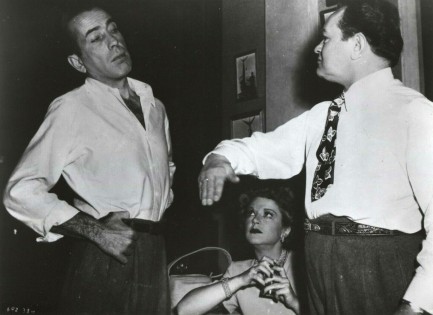
Everybody wants to slap somebody sometime. Luckily, actors in movies do it so you don't have to. The above shot is a good example. Edward G. Robinson lets Humphrey Bogart have it in 1948's Key Largo, as Claire Trevor looks on. In vintage cinema, people were constantly slapping. Men slapped men, men slapped women, women slapped women, and women slapped men. The recipient was usually the protagonist because—though some readers may not realize this—even during the ’40s and 50s, slapping was considered uncouth at a minimum, and downright villainous at worst, particularly when men did it. So generally, bad guys did the slapping, with some exceptions. Glenn Ford slaps Rita Hayworth in Gilda, for example, out of humiliation. Still wrong, but he wasn't the film's villain is our point. Humphrey Bogart lightly slaps Martha Vickers in The Big Sleep to bring her out of a drug stupor. He's like a doctor. Sort of.
In any case, most cinematic slapping is fake, and when it wasn't it was done with the consent of the participants (No, really slap me! It'll look more realistic.). There are some famous examples of chipped teeth and bloody noses deriving from the pursuit of realism. We can envision a museum exhibit of photos like these, followed by a lot of conversation around film, social mores, masculinity, and their intersection. We can also envison a conversation around the difference between fantasy and reality. There are some who believe portryals of bad things endorse the same. But movies succeed largely by thrilling, shocking, and scaring audiences, which requires portraying thrilling, shocking, and frightening moments. If actors can't do that, then ultimately movies must become as banal as everyday llife. Enjoy the slapfest.
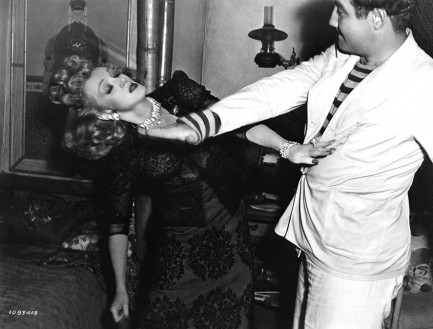 Broderick Crawford slaps Marlene Dietrich in the 1940's Seven Sinners.
Broderick Crawford slaps Marlene Dietrich in the 1940's Seven Sinners.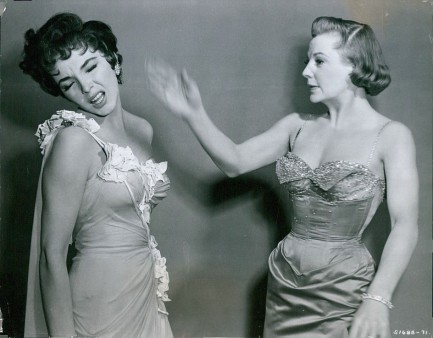 June Allyson lets Joan Collins have it across the kisser in a promo image for The Opposite Sex, 1956.
June Allyson lets Joan Collins have it across the kisser in a promo image for The Opposite Sex, 1956.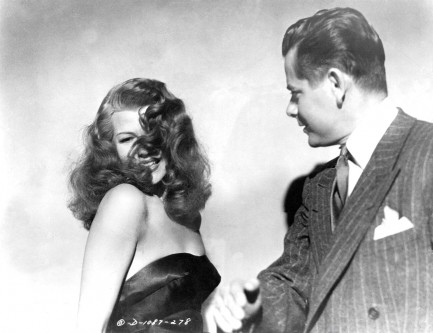 Speaking of Gilda, here's one of Glenn Ford and Rita Hayworth re-enacting the slap heard round the world. Hayworth gets to slap Ford too, and according to some accounts she loosened two of his teeth. We don't know if that's true, but if you watch the sequence it is indeed quite a blow. 100% real. We looked for a photo of it but had no luck.
Speaking of Gilda, here's one of Glenn Ford and Rita Hayworth re-enacting the slap heard round the world. Hayworth gets to slap Ford too, and according to some accounts she loosened two of his teeth. We don't know if that's true, but if you watch the sequence it is indeed quite a blow. 100% real. We looked for a photo of it but had no luck.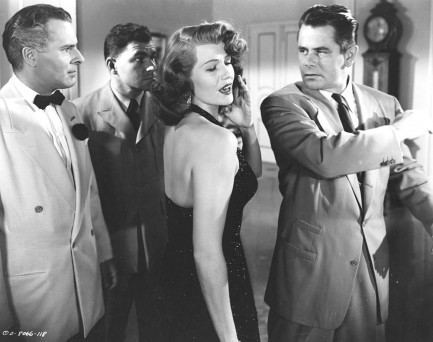 Don't mess with box office success. Ford and Hayworth did it again in 1952's Affair in Trinidad.
Don't mess with box office success. Ford and Hayworth did it again in 1952's Affair in Trinidad.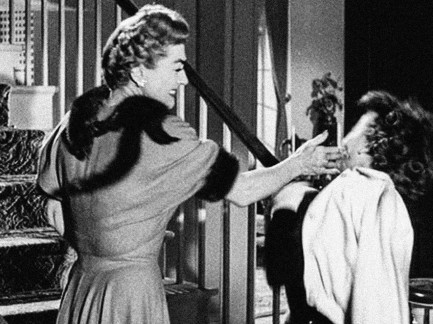 All-time film diva Joan Crawford gets in a good shot on Lucy Marlow in 1955's Queen Bee.
All-time film diva Joan Crawford gets in a good shot on Lucy Marlow in 1955's Queen Bee.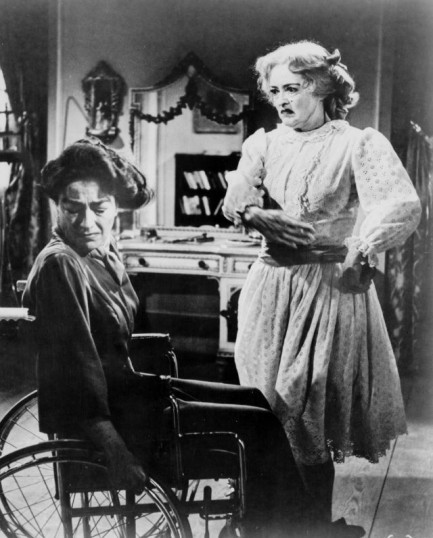 The answer to the forthcoming question is: She turned into a human monster, that's what. Joan Crawford is now on the receiving end, with Bette Davis issuing the slap in Whatever Happened to Baby Jane? Later Davis kicks Crawford, so the slap is just a warm-up.
The answer to the forthcoming question is: She turned into a human monster, that's what. Joan Crawford is now on the receiving end, with Bette Davis issuing the slap in Whatever Happened to Baby Jane? Later Davis kicks Crawford, so the slap is just a warm-up.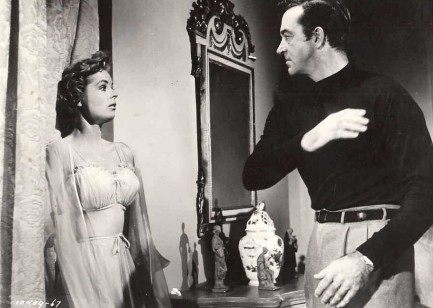 Mary Murphy awaits the inevitable from John Payne in 1955's Hell's Island.
Mary Murphy awaits the inevitable from John Payne in 1955's Hell's Island.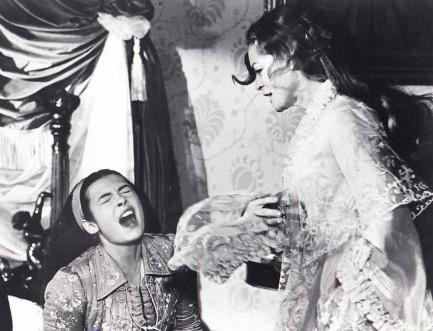 Romy Schneider slaps Sonia Petrova in 1972's Ludwig.
Romy Schneider slaps Sonia Petrova in 1972's Ludwig.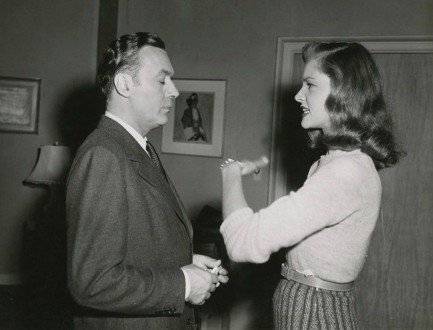 Lauren Bacall lays into Charles Boyer in 1945's Confidential Agent and garnishes the slap with a brilliant snarl.
Lauren Bacall lays into Charles Boyer in 1945's Confidential Agent and garnishes the slap with a brilliant snarl.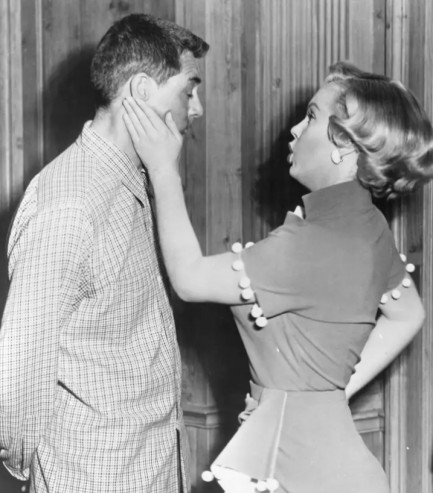 Iconic bombshell Marilyn Monroe drops a smart bomb on Cary Grant in the 1952 comedy Monkey Business.
Iconic bombshell Marilyn Monroe drops a smart bomb on Cary Grant in the 1952 comedy Monkey Business.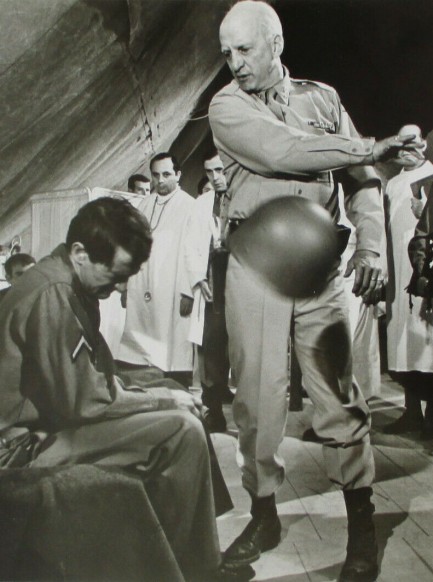 This is the most brutal slap of the bunch, we think, from 1969's Patton, as George C. Scott de-helmets an unfortunate soldier played by Tim Considine.
This is the most brutal slap of the bunch, we think, from 1969's Patton, as George C. Scott de-helmets an unfortunate soldier played by Tim Considine.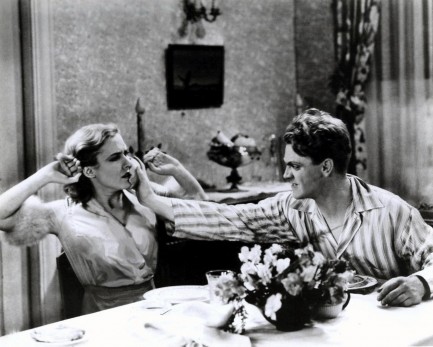 A legendary scene in filmdom is when James Cagney shoves a grapefruit in Mae Clark's face in The Public Enemy. Is it a slap? He does it pretty damn hard, so we think it's close enough. They re-enact that moment here in a promo photo made in 1931.
A legendary scene in filmdom is when James Cagney shoves a grapefruit in Mae Clark's face in The Public Enemy. Is it a slap? He does it pretty damn hard, so we think it's close enough. They re-enact that moment here in a promo photo made in 1931.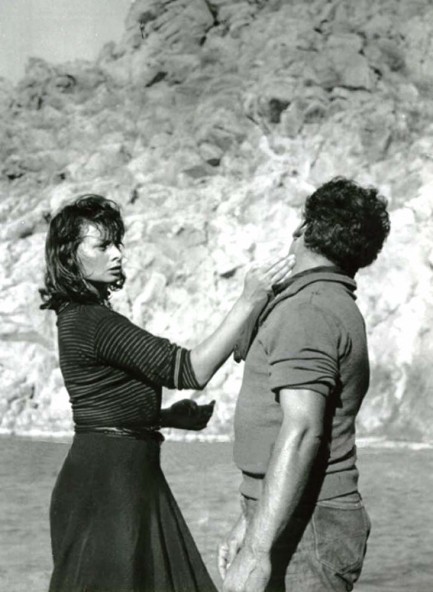 Sophia Loren gives Jorge Mistral a scenic seaside slap in 1957's Boy on a Dolphin.
Sophia Loren gives Jorge Mistral a scenic seaside slap in 1957's Boy on a Dolphin.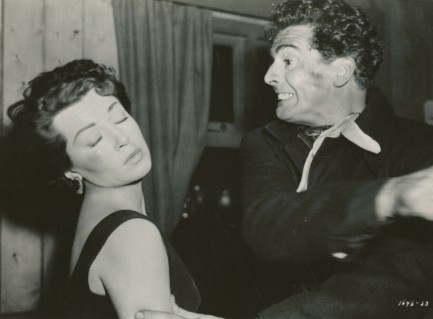 Victor Mature fails to live up to his last name as he slaps Lana Turner in 1954's Betrayed.
Victor Mature fails to live up to his last name as he slaps Lana Turner in 1954's Betrayed.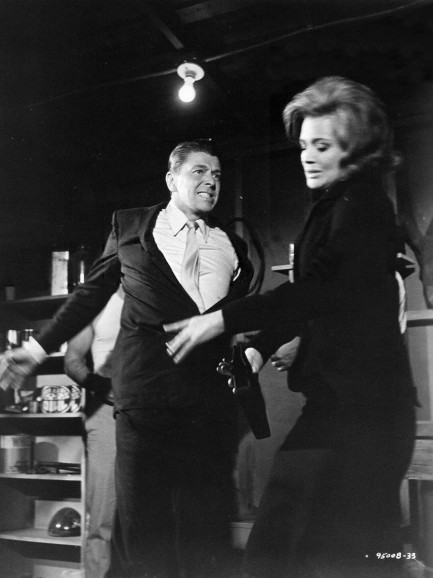 Ronald Reagan teaches Angie Dickinson how supply side economics work in 1964's The Killers.
Ronald Reagan teaches Angie Dickinson how supply side economics work in 1964's The Killers.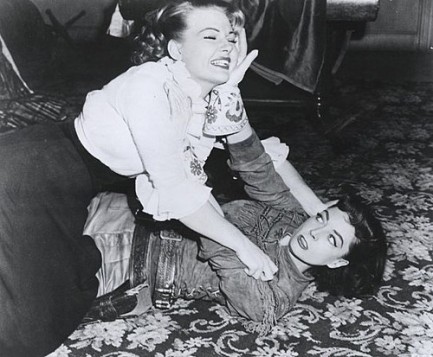 Marie Windsor gets in one against Mary Castle from the guard position in an episode of television's Stories of the Century in 1954. Windsor eventually won this bout with a rear naked choke.
Marie Windsor gets in one against Mary Castle from the guard position in an episode of television's Stories of the Century in 1954. Windsor eventually won this bout with a rear naked choke.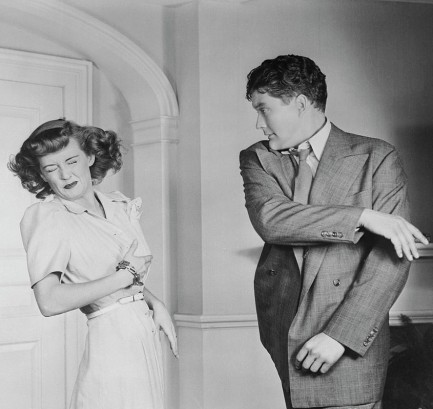 It's better to give than receive, but sadly it's Bette Davis's turn, as she takes one from Dennis Morgan in In This Our Life, 1942.
It's better to give than receive, but sadly it's Bette Davis's turn, as she takes one from Dennis Morgan in In This Our Life, 1942.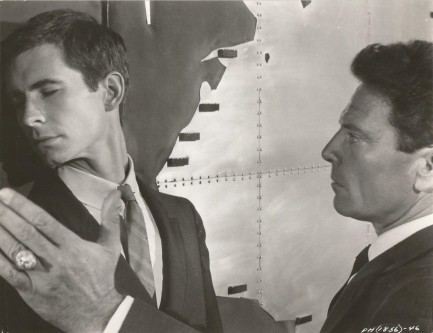 Anthony Perkins and Raf Vallone dance the dance in 1962's Phaedra, with Vallone taking the lead.
Anthony Perkins and Raf Vallone dance the dance in 1962's Phaedra, with Vallone taking the lead.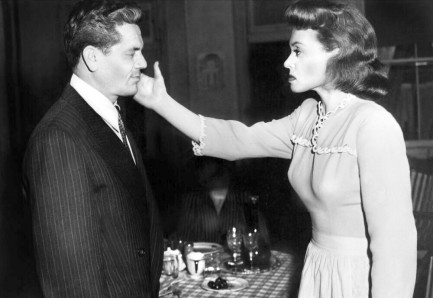 And he thought being inside the ring was hard. Lilli Palmer nails John Garfield with a roundhouse right in the 1947 boxing classic Body and Soul.
And he thought being inside the ring was hard. Lilli Palmer nails John Garfield with a roundhouse right in the 1947 boxing classic Body and Soul.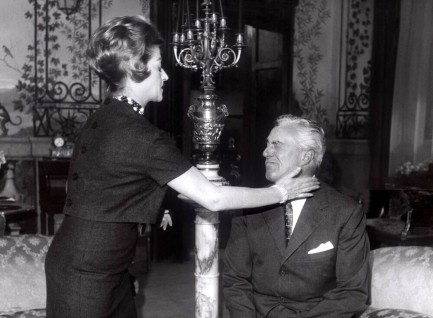 1960's Il vigile, aka The Mayor, sees Vittorio De Sica rebuked by a member of the electorate Lia Zoppelli. She's more than a voter in this—she's also his wife, so you can be sure he deserved it.
1960's Il vigile, aka The Mayor, sees Vittorio De Sica rebuked by a member of the electorate Lia Zoppelli. She's more than a voter in this—she's also his wife, so you can be sure he deserved it.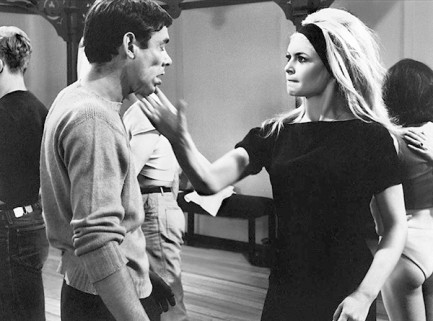 Brigitte Bardot delivers a not-so-private slap to Dirk Sanders in 1962's Vie privée, aka A Very Private Affair.
Brigitte Bardot delivers a not-so-private slap to Dirk Sanders in 1962's Vie privée, aka A Very Private Affair.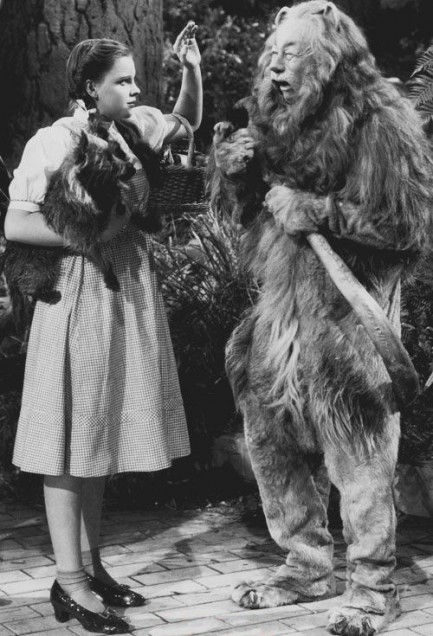 In a classic case of animal abuse. Judy Garland gives cowardly lion Bert Lahr a slap on the nose in The Wizard of Oz. Is it his fault he's a pussy? Accept him as he is, Judy.
In a classic case of animal abuse. Judy Garland gives cowardly lion Bert Lahr a slap on the nose in The Wizard of Oz. Is it his fault he's a pussy? Accept him as he is, Judy.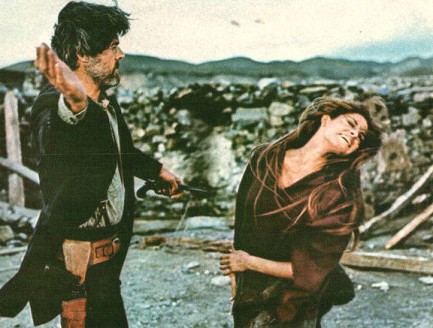 Robert Culp backhands Raquel Welch in 1971's Hannie Caudler.
Robert Culp backhands Raquel Welch in 1971's Hannie Caudler.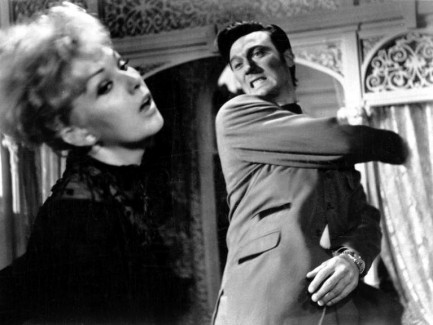 And finally, Laurence Harvey dares to lay hands on the perfect Kim Novak in Of Human Bondage.
And finally, Laurence Harvey dares to lay hands on the perfect Kim Novak in Of Human Bondage. Key LargoSeven SinnersThe Opposite SexGildaThe KillersWhatever Happened to Baby Jane?LudwigConfidential AgentPattonThe Public EnemyBoy on a DolphinOf Human BondageQueen BeeBetrayedStories of the CenturyIn This Our LifePhaedraBody and SoulIl vigileThe MayorThe Wizard of OzHannie CaulderVie privéeA Very Private AffairEdward G. RobinsonHumphrey BogartClaire TrevorMarlene DietrichBroderick CrawfordJune AllysonJoan CollinsGlenn FordRita HayworthBette FordJoan CrawfordMary MurphyJohn PayneRomy SchneiderSonia PetrovaLauren BacallCharles BoyerMarilyn MonroeCary GrantGeorge C. ScottTim ConsidineJames CagneyMae ClarkeSophia LorenJorge MistralJoan CrawfordLucy MarlowVictor MatureLana TurnerMarie WindsorMary CastleDennis MorganRaf ValloneAnthony PerkinsLilli PalmerJohn GarfieldLia ZoppelliKim NovakLaurence HarveyVittorio De SicaDirk SandersBrigitte BardotJudy GarlandBert LahrRaquel WelchRobert CulpRonald ReaganAngie Dickinson
| Vintage Pulp | May 21 2021 |

Errol Flynn takes readers back to the romantic South Seas of his youth.
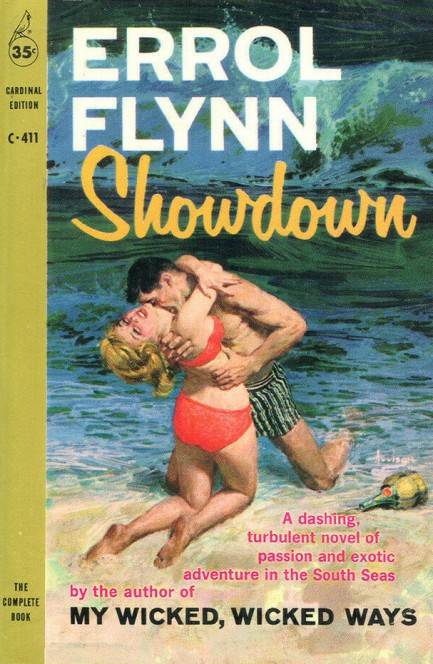
Above you see a cover for Showdown, which is a terrible name for this novel. It's evocative of nothing, a failing that's particularly egregious considering the story is set in the exotic South Seas. You may not have known that Errol Flynn was a novelist, but indeed he was, writing this and Beam Ends, plus his autobiography My Wicked, Wicked Ways, which you can consider fiction due to all the sticky episodes from his life it omits. Flynn was the equal of most popular fiction authors of his era, possibly even better than most, however Showdown, besides a better title, could have used an edit for conciseness in the first half. He goes into what we feel is unneeded detail into secondary characters, but even so, everything he writes is confident and steeped in tropical atmosphere.
In the tale, a British boat captain named Shamus O'Thames plies the waters around New Guinea, falls in love with a nun named Granice, and eventually takes on a charter of Hollywood types shooting second unit footage for a movie. It's an ill-advised trip, but he agrees to it mainly because it will take him near his nun's isolated jungle mission. Of course the voyage aboard his boat Maski does not go as planned, as the group end up stranded in headhunter territory. We could offer more details, but we don't want to spoil it for interested readers. We'll just say that it's a fantastic tale with unexpected turns, some of them hard to believe, but with the whole lent credibility by the fact that Flynn, who was from Tasmania, had numerous real life adventures in New Guinea before he became a star.
Showdown probably couldn't be published today due to its casting of native New Guinean people, known as Papuans or sometimes Melanesians, as either loyal servants or depraved villains. The book was originally published in 1946, a time when most white men didn't think of native peoples as owners of their own land, nor deserving of self determination. It's difficult to know exactly how Flynn himself felt about colonialism. We suspect, based on the narrative, that he might not have been entirely on the side of the forces of so-called civilization, but we'd have to re-read his autobiography to know for sure, and that book, sadly, vanished somewhere into the heart of darkness during one of our international moves. Flynn's adventurer O'Thames is certainly kinder than most, but can't be called enlightened by any stretch.
Anyway, Showdown is worth reading, bad title and all (by the way, we totally get the inference of a showdown not only between characters, but between cultures—it's still a bad title). Flynn covers land and sea, love and hate, race and racism (however inadequately), and ultimately, like other authors in this sub-genre (see here and here), asks whether white men should be in the tropics at all. He doesn't have any new answers, but he certainly says what he wants to with some style and an abundance of conviction. He was open about the fact that he preferred being a novelist over being an actor. His personal foibles and failings aside, it's too bad he didn't write more.
Anyway, Showdown is worth reading, bad title and all (by the way, we totally get the inference of a showdown not only between characters, but between cultures—it's still a bad title). Flynn covers land and sea, love and hate, race and racism (however inadequately), and ultimately, like other authors in this sub-genre (see here and here), asks whether white men should be in the tropics at all. He doesn't have any new answers, but he certainly says what he wants to with some style and an abundance of conviction. He was open about the fact that he preferred being a novelist over being an actor. His personal foibles and failings aside, it's too bad he didn't write more.
| Vintage Pulp | May 21 2021 |

French mystery artist returns after long absence.
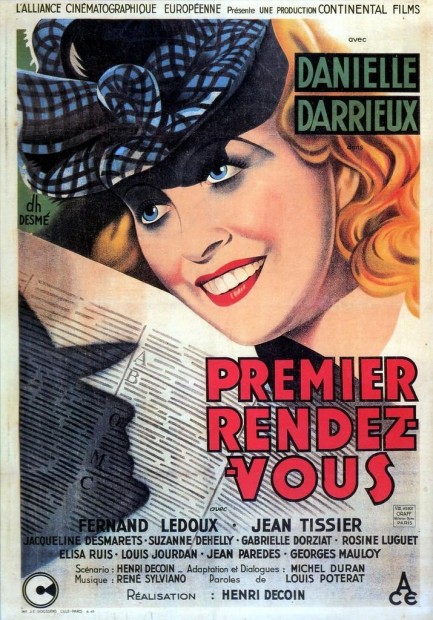
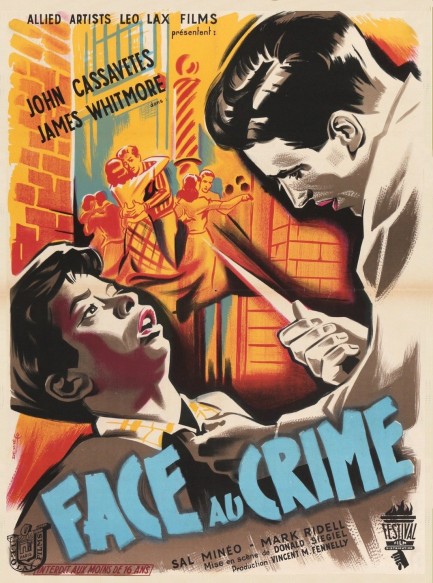
Dogged determination pays off again. Way back in 2012 we shared five book covers by a mystery artist who signed his work Desmé. Today we found two French movie posters by the same person. These were painted for 1941's Premier rendez-vous, aka Her First Affair, starring Danielle Darrieux, and 1956's Face au crime, originally titled Crime in the Streets, starring John Cassavetes and James Whitmore. Desme's signature evolved, it seems, because the first piece is signed not merely Desmé, but D.H. Desmé. So now we have his initials. What? You were expecting a full bio? These things take take time. We'll have more info in 2030.
| Vintage Pulp | May 20 2021 |

A shot in the arm may finally set us free.
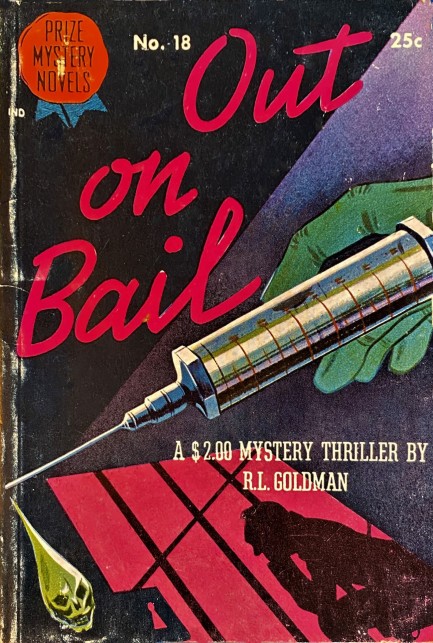
We got our vaccinations today, and in commemoration we have a collection of paperback covers featuring syringes. These should be considered a supplement to the larger collection of needles we put together in 2013. The process of vaccination was surprisingly efficient. The health pros were going thorough people at a rate of about one per minute. There's been no controversy here. No talk about refusing. Vaccinations are considered the right and sensible thing to do. We've had some shots before in our lives and mostly didn't feel them. This one felt exactly someone stabbing you in the arm with a long, sharp object.
During the last year-plus about ten friends got sick and recovered, and a couple of friends died, one in Guatemala and one in the U.S. But we can't complain about how the period has gone for us. We have plenty of space, an ocean view, mellow girlfriends, and we work online. Having all of that makes us reflect upon how difficult it's been for so many others. Early last year we threw a birthday party for PSGP. That party turned out to be the last get together between our social group, the last hurrah. Well, when it seems safe we're having a first hurrah. And we'll toast to our lost friends. Let's hope all these vaccinations work. More needles below.
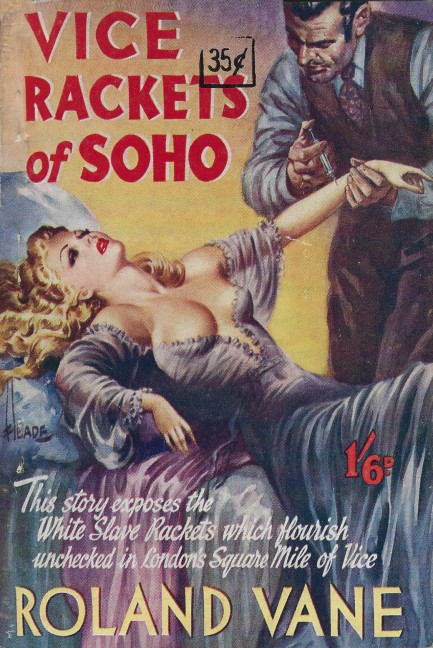
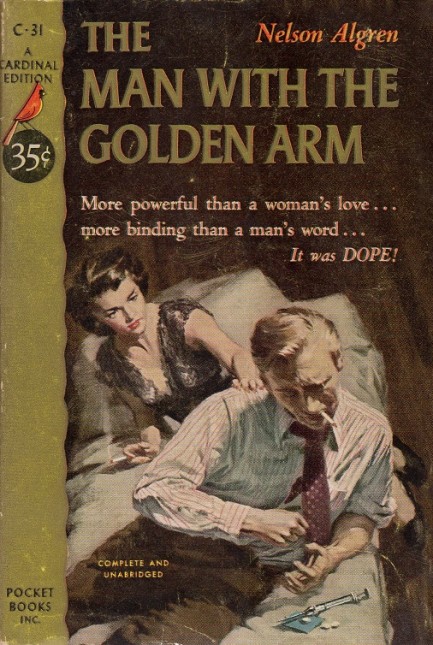
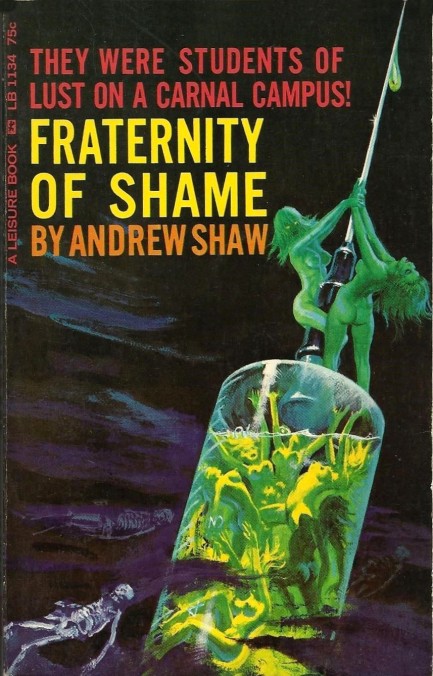
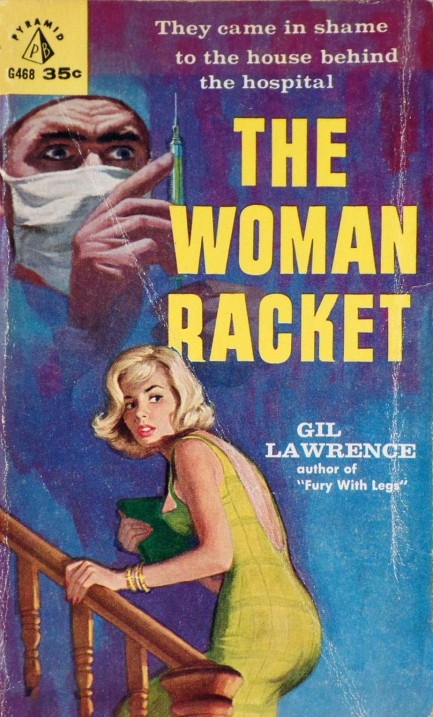
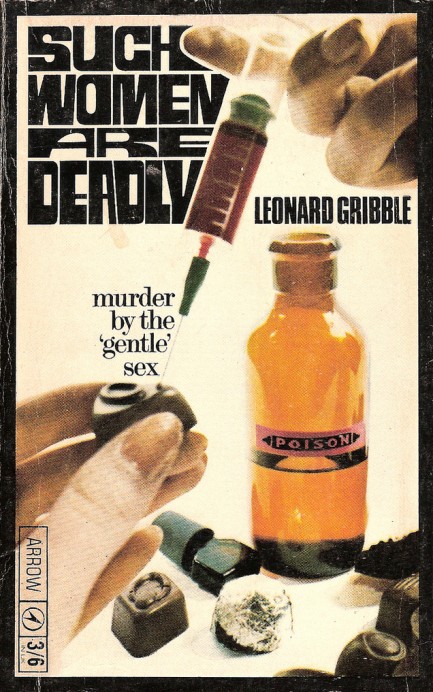
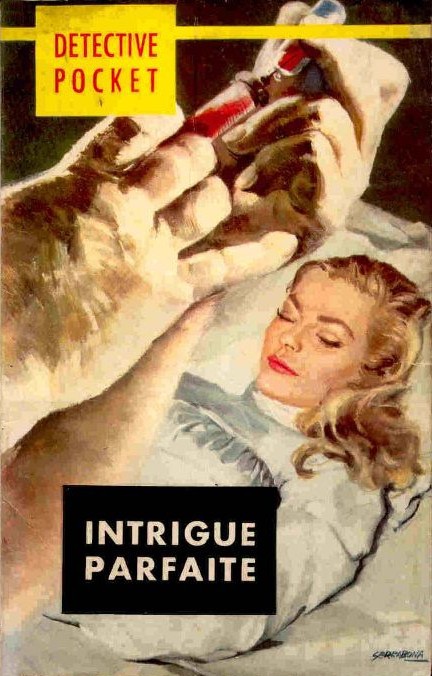
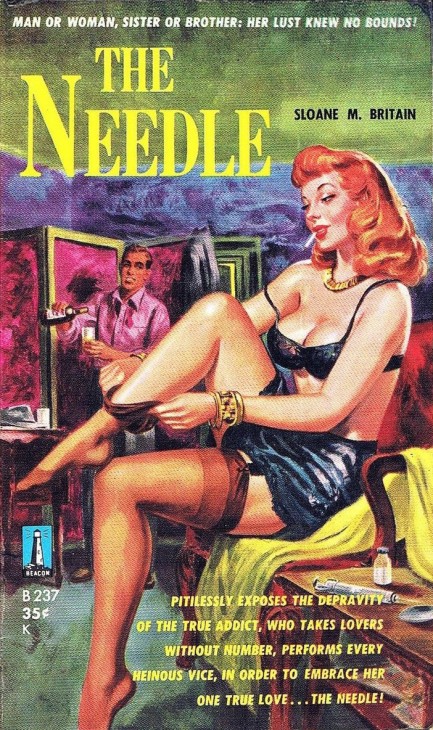
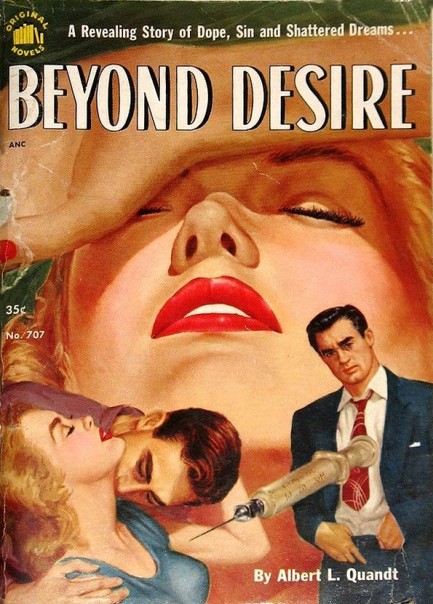
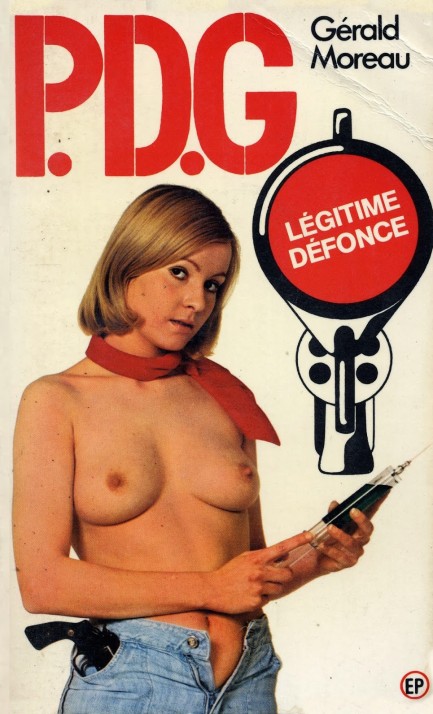









| Vintage Pulp | May 19 2021 |

In the Ministry of Fear they bake better than they spy.
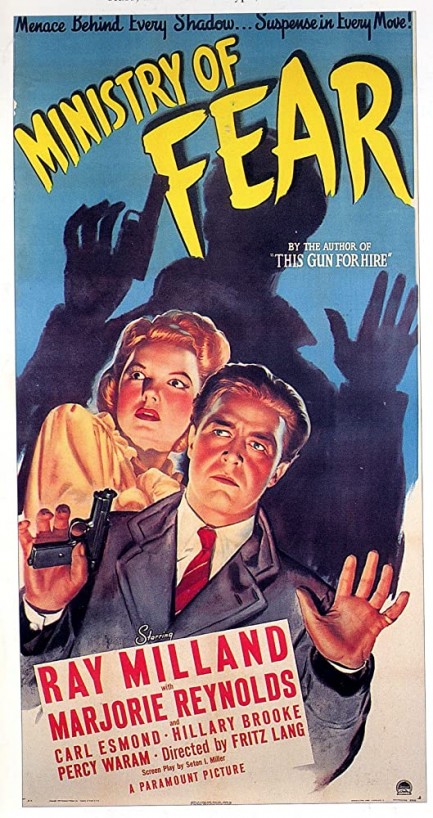
Fritz Lang was one of the most important directors of his era, both in his native Germany and in the U.S., and was a pioneer of the film noir form. Movies like Scarlet Street and especially The Big Heat are essential noir viewing. Ministry of Fear dates from a bit earlier and finds Lang saddled with what we consider to be a substandard script that through sheer artistry he makes into a watchable film. Ray Milland, Marjorie Reynolds, and Dan Duryea headline in a spy tale that revolves around Lang's favorite villains—the Nazis. Jewish and German, he left his homeland for Paris and beyond during the ascent of the Nazis during the 1930s, so the subject was personal for him, and was one he'd dealt with in previous films such as Cloak and Dagger and Hangmen Also Die.
In Ministry of Fear Milland plays a man who spends two years in a British asylum and is released at a time when World War II is raging and London is being bombed. He goes to a charity carnival and is enticed into guessing a cake's weight for a chance to win it, and because he's been given the correct answer by a fortuneteller, is victorious. But it's soon clear that the correct weight wasn't supposed to be given to him, and he isn't supposed to have won the cake. But he really wants it and resists attempts by the carny folks to take it back. He loses it during a train ride when a passenger beats the snot out of him for it, and at that point finally realizes the obvious—sweet though this confection may have been, it wasn't sought by various and sundry for its flavor, but because inside was something important. He wants answers, and he'll have to risk his neck to get them.
Generally with movies it's best to simply accept the premise, but there are limits. We were never clear on why it was necessary to put this important item in a cake. We understand subterfuge is involved in the spy game, but why not just hand the item over in an alley, or a pub bathroom, or a parked car? And if food must be involved, why a cake? Why not a haggis, or something else very few people want to just gobble up on the spot? A dried cod maybe. A blood sausage would have done. Plus they're easy to transport. You can just stick them in your pockets. And in a tight spot a whack across the nose with a blood sausage is far more effective than shoving cake in someone's mug. The cake gimmick was probably—strike that—certainly better explained in Graham Greene's source novel. We haven't read it but we're confident about that. It could have been Lang who screwed the pooch, but it was more likely Seton I. Miller. He was screenwriter as well as executive producer.
In any case Milland bumbles his way through a train trip, across a moor, in and out of a crazy séance, and into a maze of misdirection to the eventual revelation of what's inside the cake, but the whole time we kept thinking the movie should be called Ministry of Cut-Rate Spies. We don't mean to say it's a total loss. It isn't like the Eddie Izzard comedy routine, “Cake or Death.” You won't choose death over cake. But it's a pretty uninspiring flick. The old dramas that have survived have done so for a simple reason. Most of them are good. Ministry of Fear isn't bad. It's just meh. It's like a cake that fell—it's flat and dense, but teases you with how yummy it could have been. It premiered in England today in 1944.
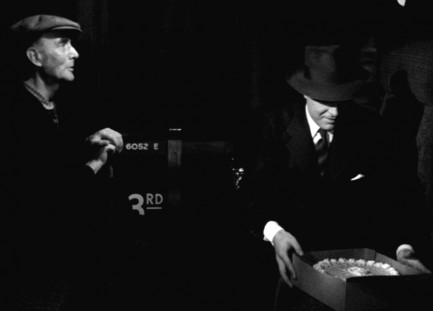
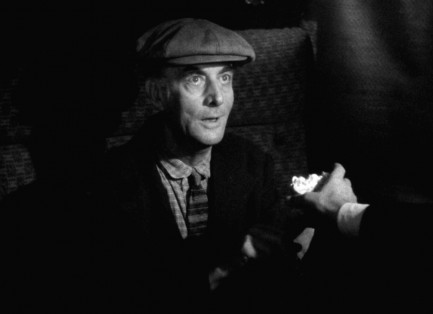 Here, have your cake. And eat it too. Heh.
Here, have your cake. And eat it too. Heh.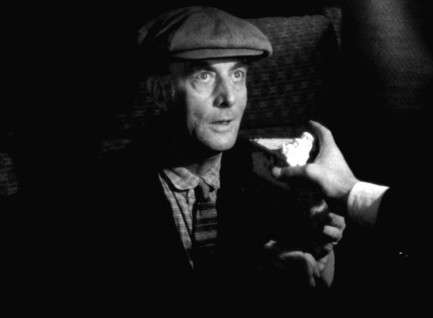 I prefer blood sausage for train trips, but I guess it's better for you I'm not shoving one of those in your face, eh?
I prefer blood sausage for train trips, but I guess it's better for you I'm not shoving one of those in your face, eh?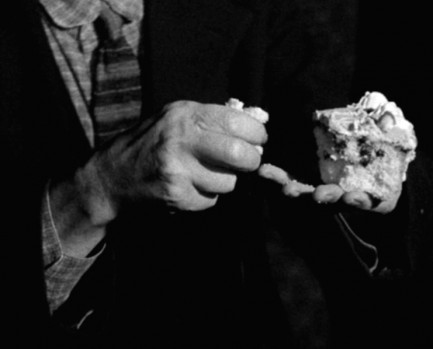
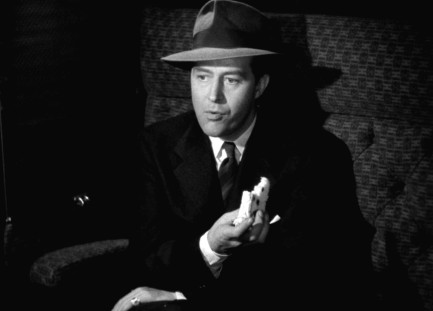 Wow, you sort of... crush the shit out of your cake before eating it.
Wow, you sort of... crush the shit out of your cake before eating it.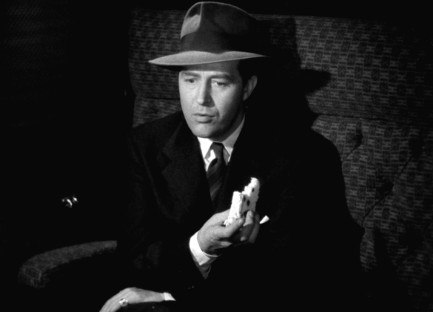 Have I been eating cake wrong the whole time I've been in England?
Have I been eating cake wrong the whole time I've been in England?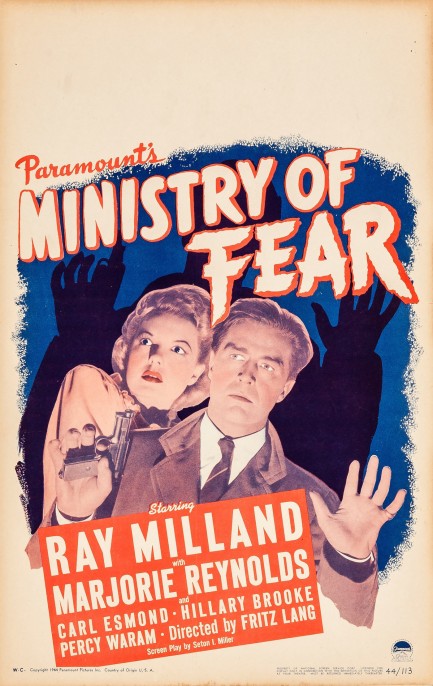
| Vintage Pulp | May 18 2021 |

What is it with men? Why can't I find one who likes cats?
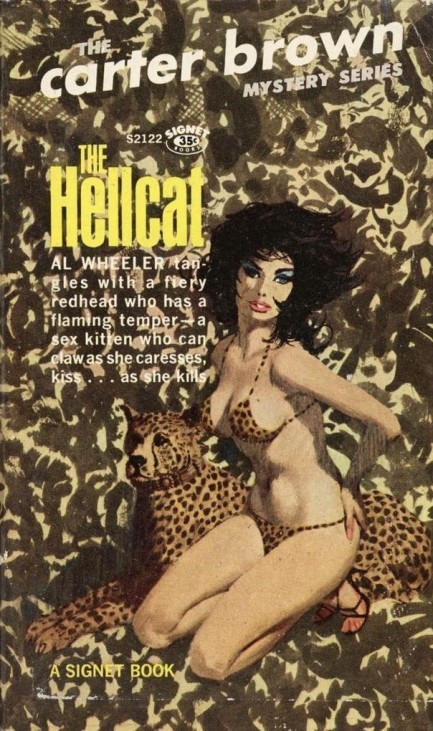
Like clockwork we return to master illustrator Robert McGinnis, as any paperback art site must. Here you see a cover for The Hellcat by Australian author Carter Brown, aka Alan Yates, for Signet Books, 1962. We showed you a Dutch cover for this years ago, which you can see here.
| Intl. Notebook | May 18 2021 |

Palm Springs residents thought they'd seen the last of mega Monroe. They were wrong.
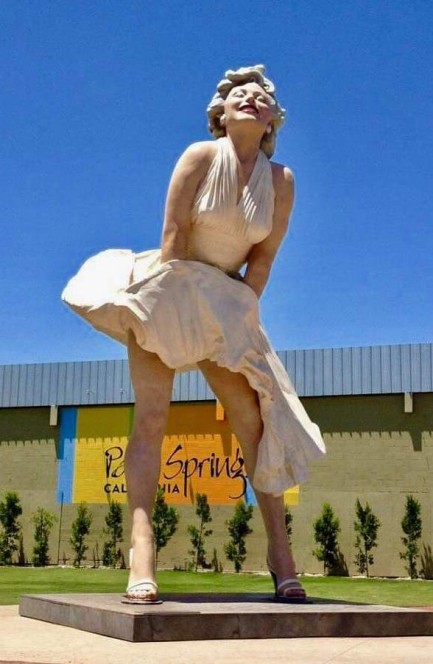
At Pulp Intl. we report on all things Marilyn Monroe, from her life and loves to her alleged porno film, so of course we couldn't let this one slide by. A giant Marilyn Monroe statue inspired by her famous subway breeze scene in The Seven Year Itch is set to be installed in Palm Springs, California. The twenty-six-foot high statue, created by Seward Johnson and called “Forever Marilyn,” already resided in the city from 2012 to 2014, and when she left plenty were happy to see her parachute-sized panties leave town. Now she's scheduled to return to a site near the Palm Springs Art Museum and some locals have their knickers in a twist. There are two objections: that the statue is garish and lowbrow, and that it's sexist. Both complaints inarguably state the obvious—it's garish and sexist. Sort of like Pulp Intl.
In our case, we preserve historical art for discussion and learning. Since plenty of art and literature from the period we highlight is sexist, our website is sexist also—at least to some. We suggest they not visit. But the Monroe statue is a 2011 creation, and as such isn't a piece of history per se, so much as a tribute to it. It's also in a public place, which makes it a matter of public debate. We can't think of any recent item that ties more contemporary issues into a Gordian knot than this statue. Yes, it's garish. Yes, it's sexist. Yes, it's a little creepy in the #metoo era.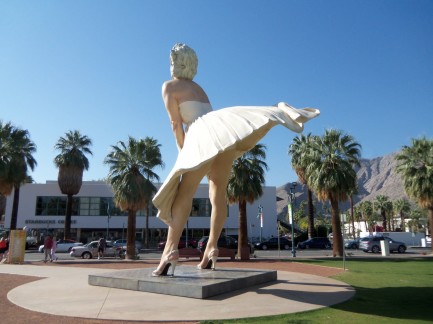 Yes, in some amorphous way it's tangentially related to the denial of progress and rights for women. Conversely, yes, it's entertaining. Yes, it's a tribute to an icon (a sexualized tribute, as she was a sex symbol—something that barely exists today). Yes, it's a tribute to golden age Hollywood. Yes, it's inspired by a moment from a comedic film that made millions of people, both male and female, feel good. It's a thorny issue, for sure.
Yes, in some amorphous way it's tangentially related to the denial of progress and rights for women. Conversely, yes, it's entertaining. Yes, it's a tribute to an icon (a sexualized tribute, as she was a sex symbol—something that barely exists today). Yes, it's a tribute to golden age Hollywood. Yes, it's inspired by a moment from a comedic film that made millions of people, both male and female, feel good. It's a thorny issue, for sure.
 Yes, in some amorphous way it's tangentially related to the denial of progress and rights for women. Conversely, yes, it's entertaining. Yes, it's a tribute to an icon (a sexualized tribute, as she was a sex symbol—something that barely exists today). Yes, it's a tribute to golden age Hollywood. Yes, it's inspired by a moment from a comedic film that made millions of people, both male and female, feel good. It's a thorny issue, for sure.
Yes, in some amorphous way it's tangentially related to the denial of progress and rights for women. Conversely, yes, it's entertaining. Yes, it's a tribute to an icon (a sexualized tribute, as she was a sex symbol—something that barely exists today). Yes, it's a tribute to golden age Hollywood. Yes, it's inspired by a moment from a comedic film that made millions of people, both male and female, feel good. It's a thorny issue, for sure.But there's a silver panty lining. Monroe has done something the greatest minds and most determined politicians have not been able to manage—unite right and left. When we were younger it was always conservatives who seemed to hate sex and anything that reminded people of it. Fast forward a couple of decades and now liberals are getting the same way. This isn't true of all conservatives and liberals, of course. But as groups, they both let reactionaries dominate discourse, which creates the impression of intolerance within the whole. The people who hate on the Monroe statue at the highest volume come from the sexual conservatism realm on one end of the spectrum, and the women's rights realm on the other. The discovery that they have common interests qualifies as good news.
We see this as a starting point for national healing. Don't get us wrong—in our opinion both conservatives and liberals should simply say, “Whatever,” to “Forever Marilyn,” and move on. But since they seem to be in agreement about blowing everything that hints at feminine sexuality way out of proportion, seems to us the sky's the limit in terms of other potential areas of agreement. We don't know about you, but we're heartened by that. We feel a little better about things. A nation torn nearly asunder has a chance to heal the rift starting with Monroe's granny panties. They're the most magical undergarments since Eva Braun's. Thanks, Marilyn. You may have saved us yet.
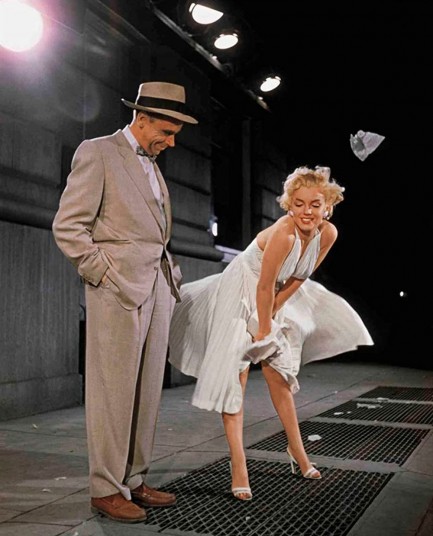
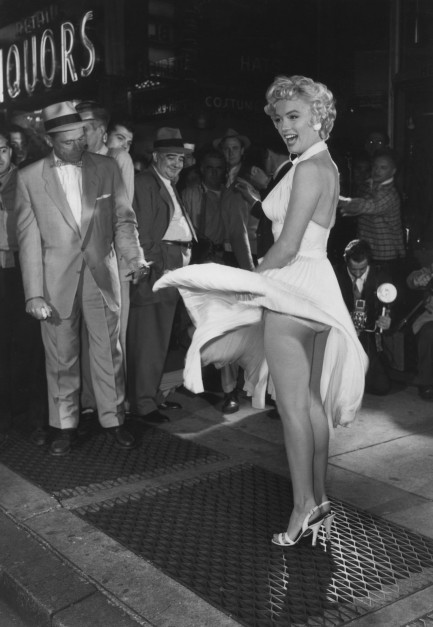


| Vintage Pulp | May 17 2021 |

Who says cats don't like to get wet?

We're back to Japan today, with another Nikkatsu Studios pinku flick, this time Mesunekotachi no yoru, known in English as Night of the Felines. We like cats, so this one should be a slam dunk. It's about three women who work in a sort of massage parlor in the Shinjuku district of Tokyo called Turkish Paradise, where they provide soapy rubdowns and other services to male customers. They manage to get involved in efforts to convert an ostensibly gay youngster named Makoto to heterosexuality. Two items of note here: apparently soapy rubdowns are a thing in Japan; and apparently the filmmakers considered sexuality a strictly a-or-b deal. But whatever, in this all-or-nothing milieu conjured up by writer Akira Nakano and director Noboru Tanaka, men can be converted from totally gay to totally straight, which totally leads to troubles in typical Nikkatsu fashion. The movie is partly comedic in nature, and lurches between laughs—or attempts at generating them, anyway—to surprisingly dark interludes involving voyeurism, suicide, and more. It was interesting, and the gender bending nature of it was different. For us most of its value was in watching the Turkish Paradise felines and their bubbly slippings and slidings. Soapy rubdowns. Who'd have thought? Since we can't visit Turkish Paradise we're going to show the movie to the Pulp Intl. girlfriends and see if they can learn some tricks. Wish us luck. Mesunekotachi no yoru premiered in Japan today in 1972.
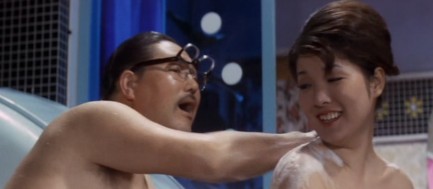
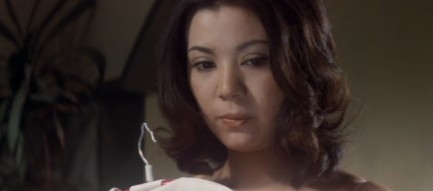

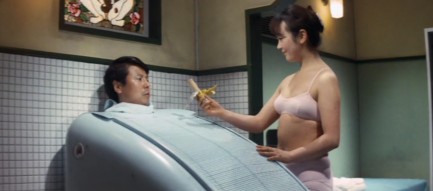

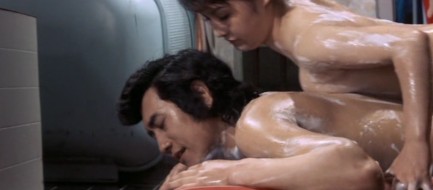














 |
 |




































































